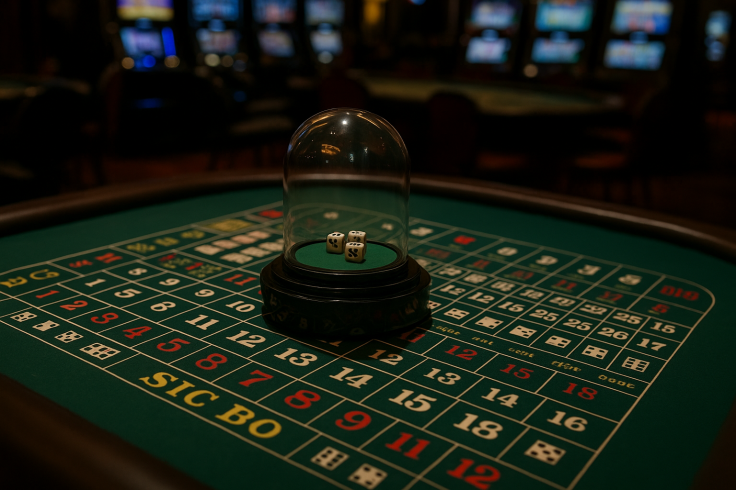Overlooked but Enduring: Sic Bo, Pai Gow Poker, and Keno in the Modern Casino
Why Classic Games Like Sic Bo, Pai Gow Poker and Keno Still Matter in a Casino World Dominated by Pokies and Roulette

Casino play in New Zealand, like in most markets, is driven by a narrow band of recognisable games - pokies, blackjack, and roulette. Statista projects the country's gambling market to reach US$1.12 billion in 2025, with most of that revenue concentrated in these categories, showing how deeply they dominate both attention and spending.
When players repeatedly circle back to the same options, other titles fade into the background despite having long histories and distinct identities on the floor. Among these are Sic Bo, Pai Gow Poker, and Keno, each offering experiences that contrast with the speed or spectacle of the usual draws. Looking more closely at them shows how much is missed when choice is narrowed to only a few dominant names.
Sic Bo and the Simplicity of Dice
While mainstream tables revolve around wheels and cards, Sic Bo belongs to the group of traditional dice games that still carry weight in certain parts of the world. The game, with its Chinese origins, continues to hold a central position in Macau, where Big and Small bets attract a steady following. In Western casinos, however, Sic Bo is often relegated to a corner table or omitted entirely, bypassed by players on their way to roulette or blackjack.
Statistics show that players still concentrate on a narrow group of titles, even though the best NZ online casinos promote vast libraries, with some advertising more than 3,000 games. That gap between the wide choice offered and the narrow selection used explains why Sic Bo is frequently ignored, despite being present in most large gaming catalogues.
This tendency, to gravitate to what is familiar, is visible in online shopping trends, where the abundance of options rarely changes the fact that buyers cluster around a few favourites. In a casino, the result is that players bypass straightforward bets like Big and Small, even though they require little explanation and carry a house edge of just 2.78 percent — a level of fairness comparable to the most popular table games.
Pai Gow Poker and the Value of Time
If Sic Bo shows how simplicity can be overlooked, Pai Gow Poker illustrates the opposite: its complexity and slow pace limit broad appeal, but they still remain indispensable features for players who prefer longer games with more time to think. Pai Gow Poker challenges players to arrange seven cards into two hands, one high and one low, in a format that produces frequent pushes. These neutral outcomes keep chips on the table longer, giving players extended opportunities for decision-making and interaction.
This steady outcome cycle, where results often end in a standstill rather than a decisive win or loss, explains why predictability carries such weight in player experience. Research on volatility in video poker results shows that lower-variance formats create longer streaks and steadier play, which many participants find more enjoyable than unpredictable swings. The findings highlight qualities such as frequent smaller wins and fewer abrupt losses, which align closely with the experience Pai Gow Poker delivers.
Keno and the Overlooked Lottery Inside Casinos
Among the quieter corners of a casino floor, Keno occupies a space that bridges the culture of national lotteries with the environment of table and machine play. Players select numbers from a grid, wait for the draw, and collect payouts based on how many match. The format is instantly recognisable to anyone familiar with weekly lottery tickets, yet in casinos it tends to attract only a fraction of the attention given to pokies or table staples.
In New Zealand, annual lottery spending shows how deeply established number draws are in everyday gambling habits, but the casino versions remain marginal. The scale of this gap is even more highlighted in Nevada's Gaming Win Report, which recorded more than US$1 billion in blackjack win on the Las Vegas Strip in 2024 while Keno accounted for only US$2 million. This disparity explains why the game rarely features in advertising, even though its structure is simple and its stakes modest.
Yet, what keeps Keno alive is not its revenue power but its accessibility. Small entry costs and familiar mechanics make it a comfortable option for casual play, especially for those who want light participation without the intensity of continuous wagering. Its persistence reminds us that casino floors are not only built on the most profitable titles, but also on tenacious games that continue to hold meaning for the players who seek them out.
© Copyright IBTimes 2025. All rights reserved.





















